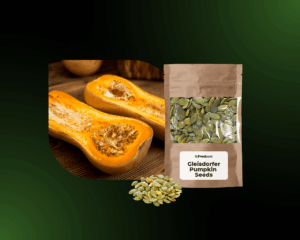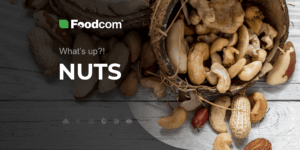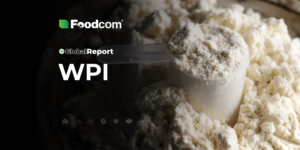- The seed market is growing rapidly, driven by demand for functional foods, supplements, and natural cosmetics.
- Functional seeds such as flaxseed, hemp, black cumin, and milk thistle are gaining particular importance.
- Producers are investing in the quality and resilience of crops, adapting to climate change and the needs of eco-conscious consumers.
- Regions such as Asia and Eastern Europe are growing in strength as alternative sources of supply and innovation.
The year 2024 has brought a clear acceleration of change in the global seed market – both oilseeds and high-protein seeds – influenced by the rise of functional foods, environmental constraints and growing demand from the food and cosmetics industry. Seeds such as linseed, hemp, nigella, thistle or fruit seeds are playing an increasingly important role in the production of oils, supplements and alternative protein sources. However, the sector faces climate challenges, limited availability of raw material and increased competition for agricultural land for speciality crops.
Global seed market analysis 2024
2024 confirmed the growing importance of seeds in the global food and industrial chain, both in the agricultural crops sector and in the food, cosmetics and nutraceutical industries. The global seed market was estimated to be worth USD 88.82 billion in 2024 and is forecast to grow to more than USD 128 billion by 2032, corresponding to a compound annual growth rate (CAGR) of 4.7%.
Three main factors are driving market growth: ongoing climate change, global demand for alternative sources of protein and vegetable oils, and increased interest in plant-based products in the diet. In response, producers are investing in the development of varieties that are resistant to drought, pests and environmental stresses, as well as seeds for organic and regenerative crops.
The functional seeds segment, such as flaxseed, hemp, nigella and thistle, used extensively in the production of oils, food additives, cosmetics and dietary supplements, has seen particular momentum in 2024. At the same time, the sector faced supply challenges: unstable weather conditions, limited access to agricultural land and cost pressures related to energy and logistics affected the variability of raw material availability.
North America remains the dominant region in the market, accounting for more than 34% of the market share, mainly due to heavy investment in biotechnology, GMO crops and hybrid variety development. Asia-Pacific, on the other hand, is showing the fastest growth rate, driven by increasing demand for plant-based foods, urbanisation and the rapid development of e-commerce oriented towards natural and high-protein products.
Increased consumer awareness of the health and environmental impact of agriculture is encouraging the growth of the certified seed segment – organic, non-GMO, fair trade and from regenerative agriculture. This, in turn, is accelerating structural change in the sector, increasing the role of quality, transparency and geographical diversity of raw material sources.
Analysis of key seed types
Linseed
Linseed remains one of the key players in the functional seed segment. In 2024, its market was valued at USD 860.1 million, and is forecast to grow further above USD 1 billion as early as 2025. India and China are generating the highest demand, but Europe and North America are increasingly using linseed as a raw material for oil, functional breads, smoothies and protein blends.
Appreciated for its content of omega-3 fatty acids and lignans, flaxseed finds its way into both the food and cosmetic sectors – especially in skin care products for sensitive skin. With a relatively stable supply, the raw material remains attractively priced, although increasing competition for cultivated acreage is increasing the importance of well-contracted supplies, particularly in the organic segment.
Hemp seed
By 2024, the hemp seed market exceeds USD 7.4 billion, growing at an annual rate of nearly 12%. Growth continues to be driven by demand for alternative protein sources and the growth of the natural supplements and cosmetics market – including hemp oils, protein bars and products for vegans.
Hemp is used in both whole seed and processed forms: oil, protein or paste. The USA and Canada remain strong producers, but suppliers from India, Ukraine and Hungary are becoming increasingly important. The raw material has strong export potential, but requires strict quality and traceability standards to be met, especially when selling to EU and North American countries.
Milk thistle
Known for its high silymarin content, milk thistle istle is worth more than US$106 million in 2024. The largest increases are seen in the liver support supplements segment and in cold-pressed oils for cosmetic and pharmaceutical applications.
Crops are mainly concentrated in Asia and Central Europe, where seasonal weather conditions strongly affect raw material availability. The volatility of the crop causes significant price fluctuations, forcing producers to contract the harvest well in advance. There is also a growing demand for standardised thistle extracts for capsules and concentrates in powder form.
Cumin (black cumin)
Until recently treated mainly as an ingredient in traditional cooking and natural medicine, today cumin is gaining status as a full-fledged raw material in the cosmetic and nutraceutical industry. The global market for black cumin oil was valued at USD 33.11 million in 2024, with a forecast to grow to USD 53.33 million by 2030.
The Asian market is seeing the biggest increases driven by growing demand for natural health products, but Europe is not slowing down either. Germany and the UK are key importers, with the region as a whole accounting for 22.1% of global revenues last year.
The high antioxidant content and wide range of applications, from capsules to cosmetics, make cumin a raw material of increasing value, but also growing demands. Consumers increasingly expect standardisation and quality documentation, which places a premium on stable suppliers from Central Asia and North Africa.
Gleisdorfer pumpkin seeds
In 2024, the market for Gleisdorfer pumpkin seeds exceeds USD 950 million. The variety is gaining popularity not only in Central Europe, but also in Asian countries, where it is used for the production of oils, snacks and functional food additives.
Its high content of protein and polyunsaturated fats, as well as its lack of husk, which makes it easier to process, is a major advantage. Although organic cultivation of Gleisdorfer pumpkin is still in the minority, its high oil yield is making this raw material increasingly important to producers looking for more cost-effective solutions. Investment in local processing plants is also increasing, shortening supply chains and making exports more profitable.
Sunflower seed in the shell
Sunflower seeds remain one of the most important raw materials in the category of healthy snacks and bread toppings. This market is valued at more than USD 29 billion in 2024, with a steady growth rate of 2.1% per year.
The largest demand is generated in Asia, but Central Europe, Ukraine and Turkey play a key role on the supply side. Varieties with high oil content and processing capacity are also becoming increasingly important. The growing interest in ‘natural’ products is supporting the paddy seed segment – used not only in snacks, but also as an ingredient in baking and protein mixes.
Raspberry and strawberry seeds
Although still niche, raspberry and strawberry seeds are gaining interest from manufacturers of natural cosmetics and cold-pressed oils. In 2024, the market for raspberry seeds will reach US$164 million and strawberry seed oil nearly US$893 million (Future Market Insights).
Both raw materials are valued for their high content of antioxidants and omega-3 fatty acids, as well as their low allergen content, making them an attractive ingredient for dermocosmetics and premium supplements. Production is mainly concentrated in Europe, but limited raw material availability and expensive extraction limit the scale. This makes them all the more valuable – especially in contracts with beauty customers.
2025 – Seed market trends and forecasts
2025 will be marked by the growing importance of seeds as ingredients in functional foods, dietary supplements and natural cosmetics. After strong growth in 2024, the oilseed, high-protein and antioxidant market continues to expand, supported by the growth of e-commerce, informed consumer choices and pressure for sustainable production.
Key trends:
- Premiumisation of raw material
The growing interest in ‘organic’, ‘cold-pressed’ and ‘non-GMO’ certified products is strengthening the premium segment. This is particularly true for linseed, nigella oil and raspberry seeds. - Geographical diversity of crops
Due to climate variability and logistics costs, importers are increasingly diversifying their sources of supply. For hemp and nigella, Central Asia and Eastern Europe are growing in importance as alternatives to traditional producers. - Increasing importance of ‘functional’ seeds
Seeds such as thistle, chia, flaxseed and nigella are increasingly used as an ingredient in products to improve digestion, immunity and skin health, both in food and cosmetics. - Raw materials for supplements and nutraceuticals
In 2025, processed products are on the rise: hemp oil, silymarin capsules from thistle or pumpkin seed powder. Manufacturers are looking for raw materials with a high concentration of active ingredients and a longer shelf life. - Stabilising the supply of selected raw materials
After the disruptions in 2023-2024, some raw materials (e.g. pumpkin seeds, sunflower seeds, hay) are slowly returning to more stable volumes. However, extreme weather events in Turkey and Central and Eastern Europe remain a challenge.
“Year after year, we see that seeds such as thistle, nigella and flaxseed are no longer only finding their way into health food shops, but also into big pharmaceutical and cosmetic brands. It is not only the price that matters to producers now, but above all quality, batch purity and supply reliability. In 2025, it is suppliers who can guarantee repeatability and good documentation that will build lasting relationships with customers. The market is not only growing, it is beginning to mature.” – Katarzyna Wodzińska, International Commodity Trader.
Global Foodcom S.A. reports.
Want to know how the seed market will change in 2025? Discover the latest trends and insights that will shape the next months of 2025. Visit our blog as we regularly update our global reports. Stay up to date with Foodcom S.A.
![Overview and analysis of the seed market in 2025 [Global Report] Overview and analysis of the seed market in 2025 [Global Report]](https://foodcom.pl/wp-content/uploads/2025/05/Global-Report-szablon-pod-bloga-seeds-1520x760.png)



![Przegląd rynku mozzarelli w 2025 [Global Report] Przegląd rynku mozzarelli w 2025 [Global Report]](https://foodcom.pl/wp-content/uploads/2025/03/Przeglad-rynku-mozzarelli-w-2025-Global-Report-300x150.png)



